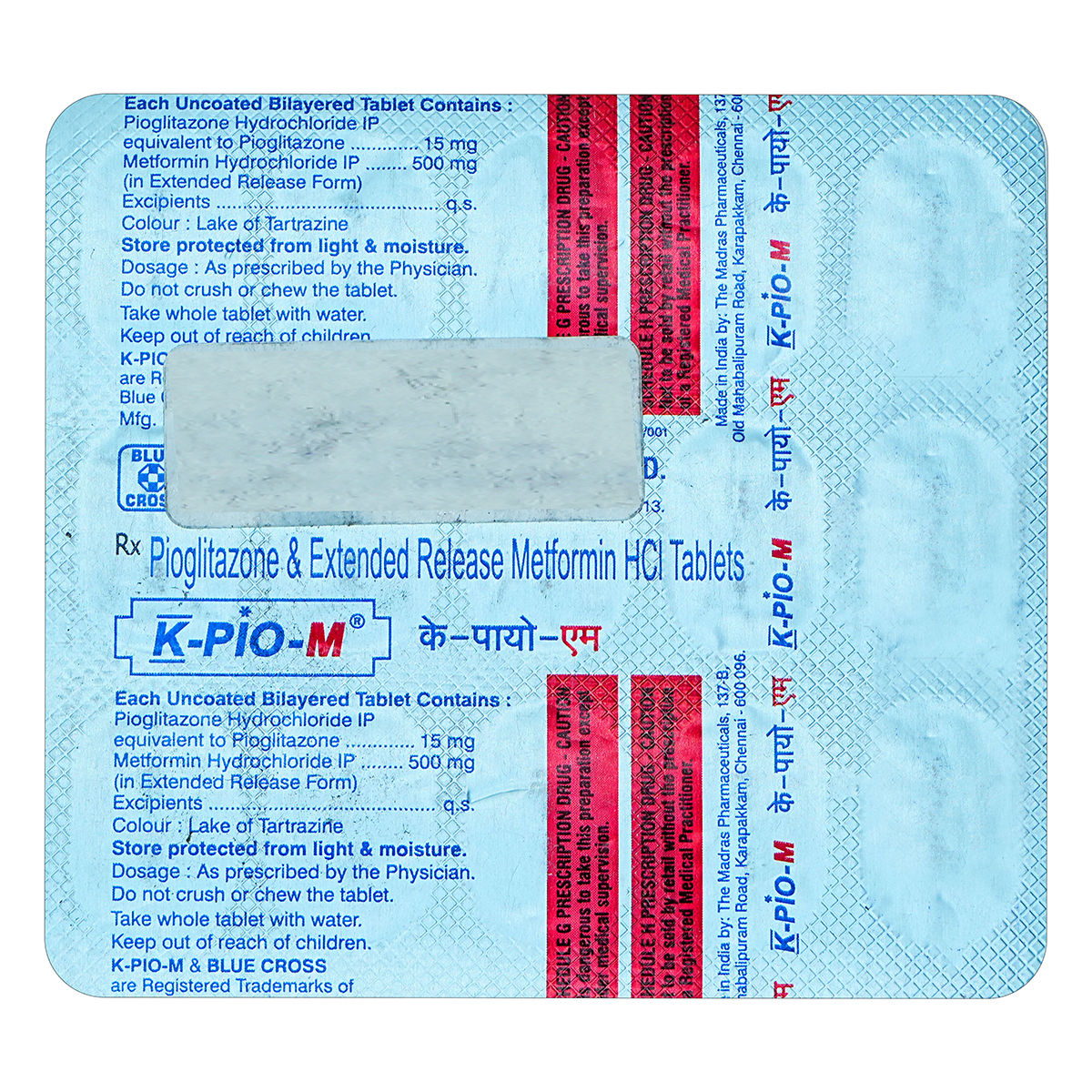Glitanir M Tablet 10's
Glitanir M Tablet is used to treat type 2 diabetes. It contains Pioglitazone and Metformin, which decrease blood sugar by decreasing its formation and increasing its consumption by cells, thereby lowering high blood sugar levels. It is used in adults to treat type 2 (non-insulin-dependent) diabetes mellitus when treatment with metformin alone is not sufficient. Some people may experience side effects such as stomach aches, nausea, vomiting, diarrhoea, loss of appetite, localized swelling (oedema), weight gain, headache, respiratory infection, numbness, taste disturbance, etc. Before taking this medicine, you should tell your doctor if you are allergic to any of its components or if you are pregnant/breastfeeding, and about all the medications you are taking and pre-existing medical conditions.
₹56.7*
MRP ₹63
10% off
₹53.55*
MRP ₹63
15% CB
₹9.45 cashback(15%)
Free Delivery
With Circle membership
(Inclusive of all Taxes)
This offer price is valid on orders above ₹800. Apply coupon PHARMA10/PHARMA18 (excluding restricted items)
Know Your Delivery Time
Provide Delivery Location

Whats That

Secure Payment

India's Most Trusted Pharmacy

Genuine Products
Composition :
Manufacturer/Marketer :
Consume Type :
Return Policy :
Expires on or after :
About Glitanir M Tablet
Glitanir M Tablet belongs to the group of medicines called anti-diabetic drugs used to treat type 2 diabetes. Type 2 diabetes mellitus used to be known as 'non-insulin-dependent diabetes mellitus (NIDDM)' or 'maturity-onset diabetes'. Type 2 diabetes develops if the body does not produce enough insulin or when the insulin that your body makes does not work as well as it should. It can also develop if the body produces too much glucagon. Insulin is a substance that helps to lower the level of sugar in your blood, especially after meals.
Glitanir M Tablet contains Pioglitazone (thiazolidinediones) & Metformin (biguanides). Pioglitazone decreases blood sugar and reverses the effects of Type II diabetes by activating switches (PPAR) inside cells to take up free glucose from the blood and decrease its levels in the blood. Metformin, on the other hand, decreases blood sugar by decreasing its formation and increasing its consumption by cells, thereby decreasing high blood sugar levels. Glitanir M Tablet is used in adults to treat type 2 (non-insulin-dependent) diabetes mellitus when treatment with metformin alone is not sufficient.
Glitanir M Tablet should be taken with food to avoid an upset stomach. Glitanir M Tablet should be taken at the same time of the day each time for best results. For better advice, your doctor will decide what dose should be taken, and it can change timely depending upon your condition. Some people may have stomach aches, feeling sick (Nausea), vomiting, diarrhoea, loss of appetite, localized swelling (oedema), weight gain, headache, respiratory infection, numbness, taste disturbance, etc. Most of these side effects of Glitanir M Tablet do not require medical attention and gradually resolve over time. However, if the side effects persist or worsen, please consult your doctor.
Glitanir M Tablet should not be stopped even if you feel better, without consulting your doctor as your sugar level keeps changing. If you stop taking Glitanir M Tablet abruptly, it may increase your sugar levels, which could further increase the risk of eyesight loss (retinopathy), kidney (nephropathy) and nerve damage (neuropathy). Glitanir M Tablet should not be taken if you have type 1 diabetes mellitus or severe kidney or liver disease. Please inform your doctor if you have any heart disease, are or are planning to get pregnant or are breastfeeding.
Uses of Glitanir M Tablet
Directions for Use
Medicinal Benefits
Glitanir M Tablet lowers blood sugar in type II diabetic patients (Non-insulin dependent ) & prevents diseases of the heart, kidneys, eyes & blood vessels in feet, which happens due to persistently high levels of blood sugar in diabetic patients. Glitanir M Tablet plays a vital role in controlling blood sugar levels and prevents serious complications of diabetes like eyesight loss (retinopathy), kidney (nephropathy), nerve damage (neuropathy), diabetic foot ulcer and delayed wound healing. Glitanir M Tablet lowers blood sugar due to the activation of cell switches (PPAR) to take up free glucose from blood & use it for energy production & decrease the production of glucose inside the liver.
How Glitanir M Tablet Works
Storage
Side Effects of Glitanir M Tablet
- Diarrhoea
- Loss of appetite
- Headache
- Nausea
- Vomiting
What if I have taken an overdose of Glitanir M Tablet
Drug Warnings
Glitanir M Tablet should not be used in patients with type 1 diabetes or with diabetic ketoacidosis. Some diabetic patients, while taking Glitanir M Tablet , might develop a rare but serious condition called lactic acidosis. In this condition, too much lactic acid accumulates in the blood, which can damage the workings of the liver and kidneys required for the elimination of excess lactic acid from the blood. Before you start taking Glitanir M Tablet , tell your doctor if you’ve ever had pancreatitis (inflammation of the pancreas), kidney disease, and low vitamin B12 levels. Glitanir M Tablet , when used with insulin, may extremely lower the blood sugar level, leading to hypoglycemia condition, which can be fatal. In this case, your doctor may adjust the dose by lowering the dose of insulin or Glitanir M Tablet . Prolonged intake of Glitanir M Tablet may lower your thyroid-stimulating hormone (TSH); hence, an annual check-up of TSH is recommended. In rare cases, you may also develop a serious skin reaction known as bullous pemphigoid that requires immediate medical attention. Tell your doctor if you are going to have a diagnostic test with an injection of dye or X-ray contrast agent. The use of Glitanir M Tablet should be stopped for a short time before having an X-ray procedure.
Drug-Drug Interactions
Drug-Food Interactions
Diet & Lifestyle Advise
- Fill your half plate with starchy veggies, a quarter with proteins, and a quarter with whole grains.
- Eat at regular intervals. Do not take a long gap between a meal or snack.
- Monitor your blood sugar level regularly, especially when there are lots of fluctuations.
- Invest in at least 150 min of moderate-intensity physical activity or one hour and 15 minutes of high-intensity exercise every week.
- Lose weight gradually to achieve a healthy body mass index (18.5 to 24.9).
- Replace refined carbohydrates-containing foods with whole grain foods and increase your intake of fruits, veggies, and other fibre-enriched foods.
- Reduce your intake of saturated fat (or hidden fats) in foods like chips, crisps, pastries, biscuits, and samosas. Choose omega-3 fatty acid-containing oils for daily cooking. For frying, you can use palm oil, mustard oil, groundnut oil, rice bran oil, and safflower oil.
- Do not take stress as it may elevate your blood sugar level. You can adopt stress management techniques like mindfulness to control stress-related blood sugar changes.
- Opt for low-fat dairy products (low-fat yoghurt, fat-free milk, and cheese, etc.).
- Keep your blood pressure as normal (140/90) as possible. As it reduces the risk of cardiovascular diseases in diabetes patients.
Habit Forming
Therapeutic Class
Glitanir M Tablet Substitute

Pioz MF-15 Tablet 10's
₹14.00per tabletGluconorm P 15 Tablet 10's
₹14.63per tabletPioglit MF 15 Tablet 10's
₹12.56per tabletGlyciphage-P15 Tablet 10's
₹8.78per tabletPiopar-MF 15 mg/500 mg Tablet 15's
₹8.49per tablet
Product Substitutes
Alcohol
Unsafe
Not recommended with alcohol as it may result in a harmful decrease or increase in levels of blood sugar depending on how much alcohol a patient has consumed.
Pregnancy
Caution
Not recommended in pregnancy. Glitanir M Tablet treatment should be stopped and replaced with any other alternative drug from other blood sugar-lowering agents on the recommendation of a doctor. You must tell your doctor if you are pregnant, think you may be pregnant or are planning to have a baby.
Breast Feeding
Caution
Not recommended in breastfeeding mothers. Do not use Glitanir M Tablet if you are breastfeeding or are planning to breastfeed, as a doctor's consultation is required.
Driving
Safe if prescribed
It is safe to use while driving or operating heavy machinery. This medicine will not affect your ability to drive or use machines, but care should be taken if you experience abnormal vision or anything that affects your ability to drive.
Liver
Caution
Glitanir M Tablet should be used with caution in patients with liver disease as Glitanir M Tablet has been found to cause harmful interactions in them. Doctors' recommendation is required before taking this drug.
Kidney
Caution
Glitanir M Tablet should be taken with caution in patients with kidney disease. In rare cases, serious interactions have been found in kidney patients, called lactic acidosis; thus, a doctor's consultation is required before taking this drug.
Children
Unsafe
Not recommended in children below 12 years of age. Use in children and adolescents under 18 years is not recommended. Consult a doctor for better alternative blood sugar-lowering agents in diabetic children.
FAQs
Country of origin
Manufacturer/Marketer address
Customers Also Bought
Disclaimer
Author Details
We provide you with authentic, trustworthy and relevant information
Recommended for a 30-day course: 3 Strips

























